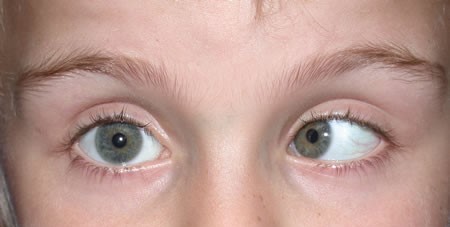What is a squint ?

A squint is when an eye turns or wanders so that it does not work with the other eye. The
eye may turn inwards, outwards or occasionally upwards or downwards. The eye may turn
all of the time or only sometimes, for example when the child is tired or concentrating. The
medical term for squint is ‘strabismus’.
What causes a squint?
- Refractive errors ---. Types of refractive errors include:
short-sightedness (myopia) – the ability to see distant objects is reduced
long-sightedness (hyperopia) – the ability to see close-up objects is reduced
astigmatism – where the cornea at the front of the eye is unevenly curved, which causes blurred vision
- childhood illnesses – such as measles
- Genetic conditions – such as Down's syndrome or cerebral palsy
- Eye problems affecting the muscles or the retina (the layer of light-sensitive nerve cells at the back of the eye)
Will child grow out of the squint?
Some very young babies have intermittent squints that get better by the age of three
months. A squint that is still present after three months of age needs to be checked by an
eye doctor.
Why does the squint matter?
The sight in the eye with the squint may not develop normally, because the eye is not
being used properly – this is called a lazy eye (the medical term is amblyopia).
The squint may make it difficult for the two eyes to work together and this may reduce the
child’s 3-D (depth) vision. This does not usually cause children any problems in their
everyday lives but there are a few careers that they may not be able to do, for example
driver, fire-fighter, pilot.
Some squints can affect the child’s appearance .
What treatments may be needed?
- Glasses:
Many children with a squint need glasses. The most common reason for glasses is that the
child has long-sight which is causing one eye to turn inwards. The long-sighted glasses
help the eyes to focus and may stop the eye turning. You may still notice the squint when
the glasses are taken off.
- Patching:
Wearing a patch over the stronger eye can improve the sight in the eye with the squint, if
the sight is reduced because the eye has not been used properly. The patch only helps to
improve the vision in the lazy eye and does not treat the squint itself but it is important to
improve the vision before the squint can be treated.
- Operation:
If a child with a squint does not need glasses or if glasses do not correct the squint, then
an operation on the muscles that move the eyes may be considered. The operation
straightens the eyes by improving the balance of the eye muscles.